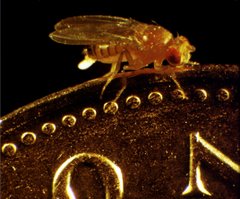Who needs to move their lab to California now that New York's approved stem cell funding? As reported yesterday in ScienceNOW (the petulant child of science journalism most recently overheard tantruming, "I want my science and I want it NOW!") on Friday March 31st, with moments to spare before FY08 began, NY state legislators passed the state's budget including 100 million dollars for stem cell research in New York state.
Why New York state begins its fiscal year in April, I don't understand, probably along the same lines as why commuters must listen to their iPods at levels audible to passengers around them. Annoying, but in the end only hurting themselves.
So what does the 100 million dollars mean for New York researchers? Mainly, it means that because of lack of federal funding, the U.S. will continue to develop patchwork funding and therefore uneven regulatory policy for stem cell research. This is concerning because although funding stem cell research on a state-by-state basis may alleviate the short-term problem of low public funding for this research, it ignores the long-term problem that the U.S., as a nation, is rendering itself uncompetitive with other countries who have approved government funds for stem cell research country-wide.
If all researchers who wanted to conduct research on human embryonic stem (ES) cells resided in California, New Jersey, New York and a few others who are considering allocating state funds to supporting this research, there would be no problem. However, since biomedical research takes place in virtually every state in the nation and stem cell researchers are the new "It Scientists" this research should be happening everywhere. Though due to the lack of federal funding, it can only happen where state or private monies are available. This gives certain states a competitive advantage, but may hinders research cooperation overall.
To take a step back, the national policy on stem cell research was set by President Bush by Executive Order (EO) in August 2001 when he said that existing human ES cell lines could be used for government funded research but that no newly created stem cell lines could be used for federally funded research.
There were two main problems with this approach. The first was that most biomedical research is federally funded. The National Institutes of Health (NIH) boasts a 28 billion dollar a year budget including 15 million to support biomedical research at extramural (outside of the NIH campus). Additionally most academic researchers at top-tier research institutions receive most of their funding from the NIH. So by disallowing research using federal funds on newly created stem cell lines, the president was essentially putting a stop to research on new stem cell lines. Since then, new mechanisms of private funding for stem cell research have emerged, but no where near the scale of NIH funding.
The second problem with Bush's 2001 EO approach was that the existing human embryonic stem cell lines were no great shakes. Before researchers purified human ES cells, they started with a more laboratory friendly mammalian system, and purified Murine (mouse) ES cells. ES cells can't survive on their own, however, and must be grown on a so-called "feeder layer" of cells that provide nutrients and support to the ES cells. Since Murine ES cells were first purified, Murine feeder layers were readily available to provide support to the first human ES cells purified. At the time that Bush announced his 2001 EO, the only human ES cells available were grown on Murine feeder cells and thus not a therapeutically useful human ES source. (Why? because mice aren't people... nuff said)
So to bring the discussion back around to New York State's well-intentioned 100 million Empire State Stem Cell Fund, I say kudos to New York State, your stem cell researchers won't defect across the Hudson to New Jersey or across the country to California.
But the overarching problem hasn't been solved. In the absence of a permissive federal policy on funding human ES cell research, the patchwork state-by-state regulation discourages collaboration and may end up hampering research.
Subscribe to:
Post Comments (Atom)


No comments:
Post a Comment